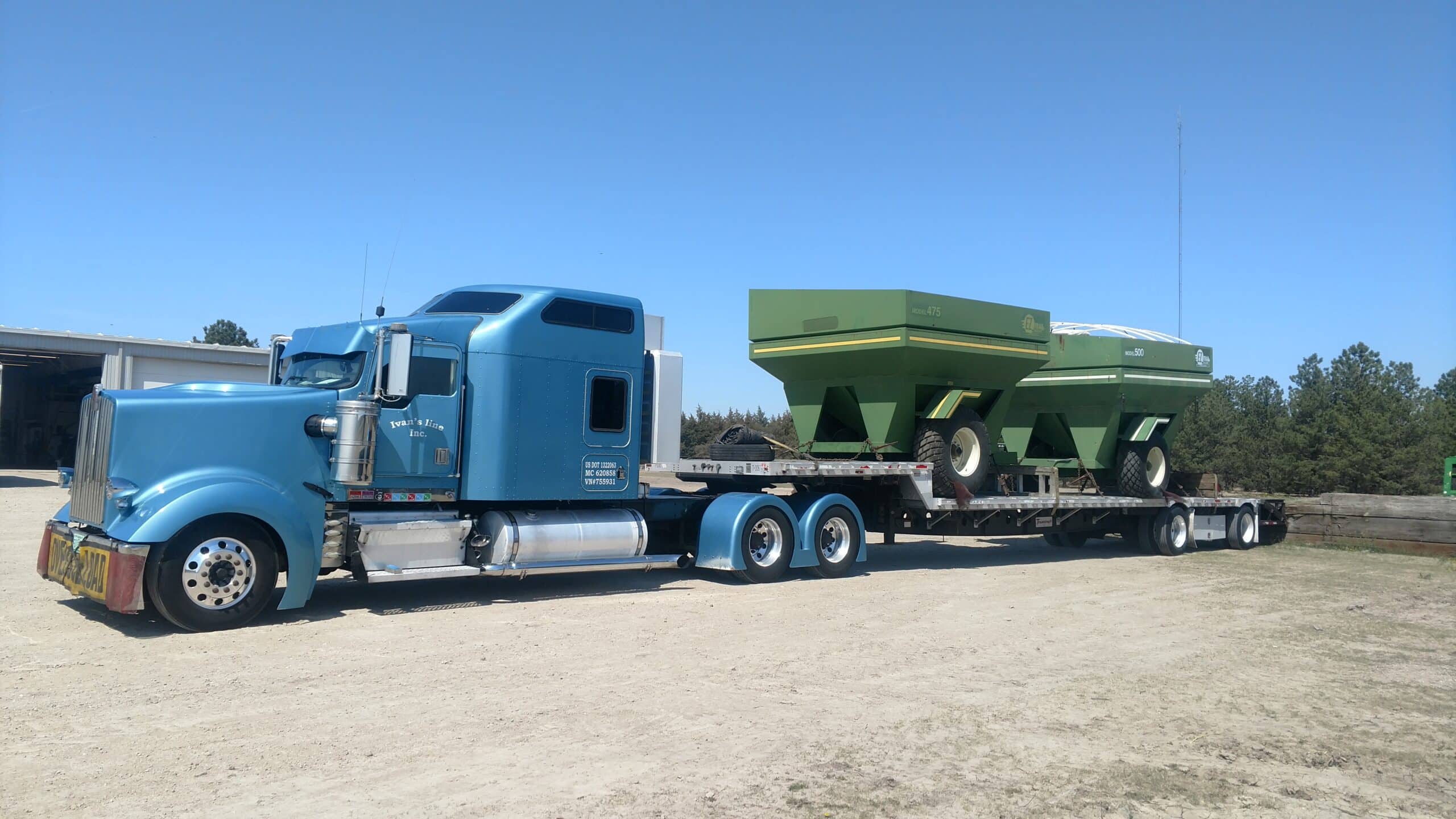
When preparing your farm equipment for transport, the main goal is to use the most affordable trailer possible. You’ll need to decide which type of trailer you’re using before you can begin preparing your equipment for transport. Choose the proper trailer, and you’re well on your way to a successful haul.
Flatbed trailers are the cheapest choice, used mainly for tractors and other low-profile equipment. You’ll also need a method of loading your equipment – dock, crane, forklift – because flatbed trailers don’t dip to the ground. If your equipment fits on a flatbed and you can load it, ship it.
Height can be an issue for farm sprayers or hay rakes. The booms on those pieces of equipment fold in, and the equipment travels with the booms pointed skyward. Step-deck trailers are the most affordable option for overheight equipment.
You gain about a foot-and-a-half of clearance by choosing a step deck. The most versatile heavy-haul trailers, the Removable Gooseneck(RGN), gives you another foot or so of clearance. RGNs also can be configured with extra axles to support overlength or overweight farm equipment.
Only the largest pieces of farm equipment travel as oversize loads. As long as your piece of equipment doesn’t weight more than 40,000 pounds, you don’t have to worry about weight. Costs associated with shipping a wideload – permits, logistics, support vehicles – can mount up fast.
Avoiding Wide Load Designation
You want to do everything you can to avoid a wideload designation for your shipment. Depending upon the circumstances, a wideload designation can double or triple your costs. Sometimes it makes sense to remove a section from your machinery, such as the cabin on a windrower, and ship it as a separate load.
Wideload transit times are ridiculous. Your oversized load can travel only at certain times. Obstacles, such as low-hanging wires, must be removed as you travel. It’s a big headache. Tips for avoiding a wideload designation include:
- Too tall? If your load is overheight on a flatbed, ask about a step-deck or RGN. You can gain as much as 3 feet in clearance.
- Too wide? Not much you can do here. Maybe remove the wheels and ship them separately or on another level of the trailer.
- Too long? You can remove booms or attachments that create an overlength issue. Extended length trailers also are available.
- Too heavy? Separate parts from the chassis to avoid an overweight designation. Cheaper to ship them separately, compared to wideload.
Combines, swathers and windrowers are candidates for oversize shipping. Sometimes your piece of equipment is so large it can’t be broken down any further. In that case, call an expert on wideload shipments to transport your equipment as affordably as possible.
Prepare Your Farm Equipment for Transport
Once you’ve selected the trailer, you can prepare your equipment for transport. It’s a good idea to take photos of your machinery before it loads. If any damage occurs during shipping, you’ll be glad you took pictures.
Keep someone on hand who can operate your equipment. While most heavy-haul drivers can operate large machinery, you’d rather have someone you know drive your equipment onto the trailer. Be nice if you could have someone drive it off the trailer, too.
Tips for preparing your farm equipment for transport include:
- Wash your equipment. Cleaning your gear exposes handholds and securement points. Also helps you notice damage to your machinery.
- Cover vulnerable pieces. Pieces like levers and instruments are expensive to repair. A little cheap bubble wrap goes a long ways.
- Refer to your owner’s manual. If you can’t locate it, you can find equipment specs online at Ritchiespecs.com. Give it a quick check
-
Disconnect the batteries. One recommendation manuals make is to disconnect the batteries. You need the equipment to start to unload it.
-
Drain the engine fluids. Maybe if you’re going long distances or switching from one weather extreme to another. Seems a little much.
If you’re shipping as a wideload, your equipment will need to be flagged and marked. Your transport company is responsible for marking your shipment. Ask for photos of the shipment to get proof that your shipper followed the proper procedures.